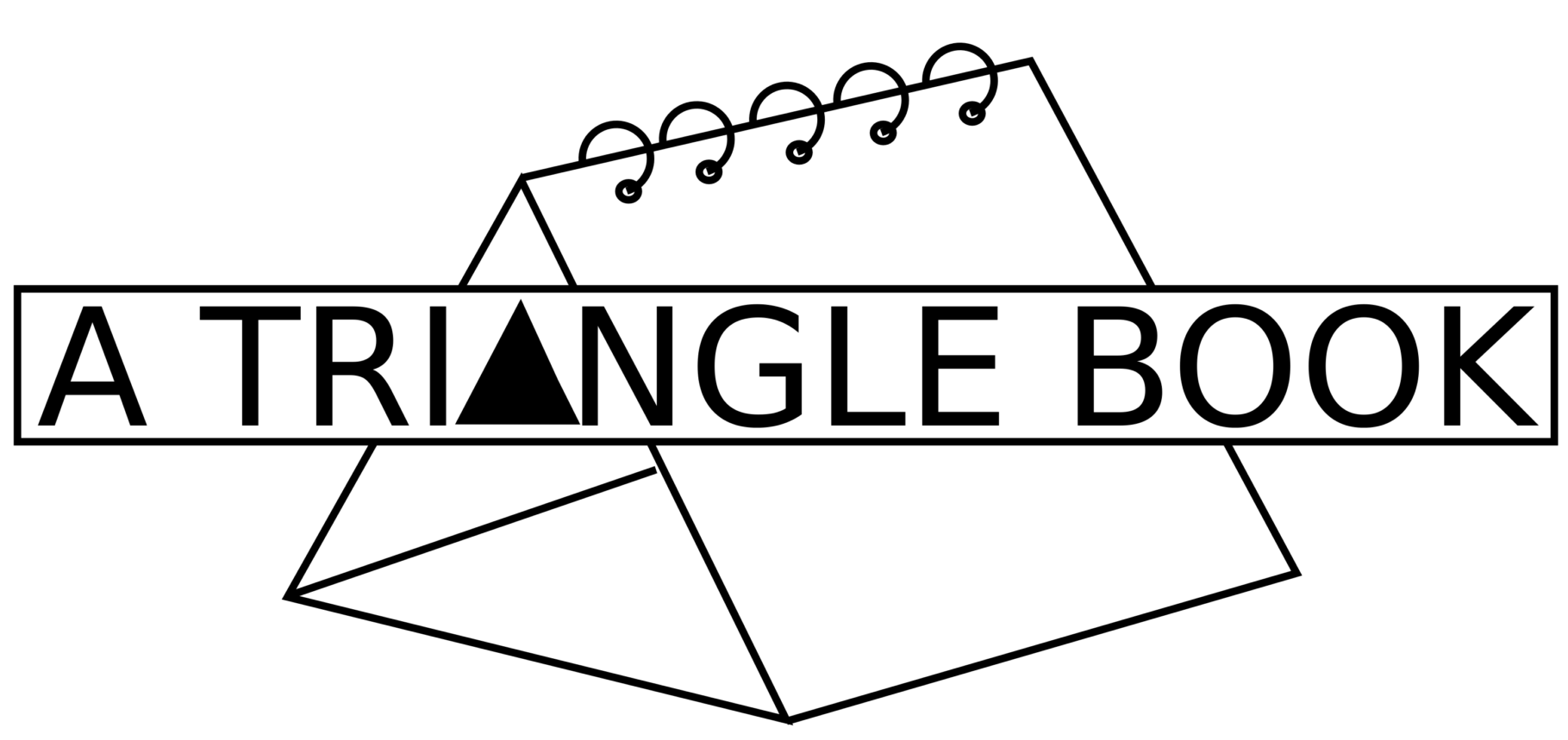There are two types of design of the Triangle Book: back spine design and front spine design. In the evolution of the Triangle Book, the front spine design came first and the back spine design came afterward, which our patents reflect. In this website, when we say Triangle Book without any distinction, we usually mean the back spine Triangle Book because we believe it will be the most popular between the two mostly because its Page Holder provides two pages for viewing, as with traditional books.
A back spine Triangle Book has three covers and a spine that are made as a single unit having fold lines. The material used for this single unit cover can be board or plastic. Its front (first) cover and back (second) cover are joined together with the spine. The second and third covers are joined together with a fold line. The book’s pages/sheets are attached to Wire-O or coil binding, which itself is attached to the third cover.
When the book is closed, it looks like a traditional book. It also is shelved like one, with its back spine facing out for identification purposes, that is, with the book’s title and author’s name printed on it.
When the book is closed, the front (first) cover lies on top of the pages; the pages lie on top of the third (extra) cover and are attached to it, and the third cover lies on top of the back (second) cover. The pages are attached to the third cover with mechanical binding, either metal Wire-O (twin wire) or coil (preferably plastic). The binding is attached to the third cover through punch holes (perforations).
Book manufacturers have two options to enable the propping of a back spine Triangle Book: an extension or a strip. They can add an extension to the outer edge of the front cover, which is connected to it by a fold line. When the book is closed, lying on a desk, its extension hangs down from the front cover, hiding the pages’ outer edges. The extension can be fixed or slightly flexible. If fixed, it should be angled inwardly, (70-75 degrees instead of 90 degrees from the front cover) in order to fit flush against the third cover when the book is propped.
Instead of providing an extension, a strip is formed by making a fold line near the outer edge of the front cover. The width of the extension or the strip is preferably, but not necessarily, the same width as that of the text block. A strip reduces costs; but an extension gives the book a more sophisticated appearance. Also, the strip provides pretty much an equilateral triangle formation when the book is propped, thus a 60 degree reading angle. The extension provides a reading angle of 65-70 degrees.
To prop a back spine Triangle Book, fasteners must be added to the extension or strip and their corresponding part added to the upper back of the third cover. Fasteners can be Velcro, magnets (preferably placed inside board), or snaps. If Velcro is used, the board surface must be able to receive its adhesive. Magnets inside the board are preferable, but they add cost.
A back spine Triangle Book enables a Page Holder to be attached to its third cover. This provides the viewing of two pages simultaneously, as with a traditional book. In this case, one page is positioned above the other rather than side-by-side. The elevated page lies flat against the top bar of the Page Holder. After reading that page, the user can push it through the cavity of the Page Holder, making that page fall to the other side of the propped structure. This Page Holder will not work on a front spine Triangle Book.
Our patent for the back spine Triangle Book with a Page Holder is US 9,895,920. To view patents, go to patents.google.com. Enter this patent # in the search bar. To view the figures, click on them, and use the top arrows.
